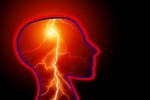Trip 10mg (Tablet)
Manufactured by: Medicon Pharmaceuticals Ltd.
Amitriptyline Hydrochloride Similar medicine
Trip is indicated for
- Migraine headache
- Depression
- Neuropathic pain
- Post-herpetic neuralgia
- Nocturnal enuresis
Precautions and warnings
Bipolar disorder, pregnancy, lactation in the elderly, CVS disease, renal or hepatic failure, epilepsy, thyroid dysfunction, and diabetes mellitus Urinary retention, prostatic hyperplasia, chronic constipation, angle-closure glaucoma, and phaeochromocytoma are all things to avoid. Keep an eye out for indicators of clinical deterioration, suicidality, or a change in behavior. It's possible that electro-convulsive therapy will enhance the hazards. It's possible that it'll affect your capacity to drive or operate machinery.
Side-effects
- Postural hypotension
- tachycardia
- conduction disturbances. Dry mouth
- wt gain
- sour or metallic taste
- stomatitis
- constipation; blurring of vision
- urinary retention
- fatigue
- dizziness
- weakness
- tremors
- headache
- confusion
- delirium in elderly
- sexual disturbances; peripheral neuropathy; urticaria
- angioedema
- sweating. Potentially Fatal: Cardiac arrhythmias.
Drug Interactions
SSRIs, TCAs, triptans, fentanyl, lithium, and tramadol all increase the risk of serotonin syndrome. Barbiturates, rifampicin, and other anticonvulsants may lower plasma levels. Methylphenidate, cimetidine, antipsychotics, and calcium channel blockers may all raise plasma levels. Along with thyroid hormones, it may cause cardiac arrhythmias. Debrisoquine, guanethidine, and clonidine's antihypertensive effects may be reduced. Epinephrine and norepinephrine's pressor effects may be enhanced. Antiarrhythmics (e.g. amiodarone or quinidine), antihistamines (astemizole, terfenadine), some antipsychotics (pimozide, sertindole, and thioridazine), sotalol, cisapride, and halofantrine) may increase the incidence of ventricular arrhythmias.
MAOIs, linezolid, and methylene blue all increase the risk of serotonin syndrome, which can be fatal.
Contraindications
Hypersensitivity; usage of MAO inhibitors during the prior 14 days; acute post-MI recovery phase Use with cisapride at the same time.
Mode of actions
Amitriptyline is a tricyclic antidepressant that has the dibenzo. It blocks the neuronal reuptake of norepinephrine and serotonin, increasing synaptic concentrations of serotonin and/or norepinephrine in the CNS.
Dosage & Administration
Adult: PO Depression Initial:50-75 mg/day; up to 150 mg/day if needed. Max: 300 mg/day in severe cases.
Child: Adolescent: Initially, 25-50 mg/day as a single dose (at bedtime) or in divided doses.
Elderly: Initially, 25-50 mg/day as a single dose (at bedtime) or in divided doses.
Neuropathic pain Initial: 10-25 mg/day at night, up to 75 mg/day if needed.
Migraine prophylaxis Initial: 10 mg/day at night. Maintenance: 50-75 mg/day at night.
Nocturnal enuresis
Child: 6-10 yr 10-20 mg/day; 11-16 yr 25-50 mg/day. All doses to be given at bedtime. Max duration: 3 mth.
Pregnancy & Lactation
Although animal reproduction studies have shown an adverse effect on the fetus and there are no adequate and well-controlled studies in pregnant women, but during pregnancy, this medicine can be used just when definitely required despite potential risks.
Mothers with a newborn baby who have used this drug during the last 3 months of pregnancy may seldom create symptoms including drowsiness, muscle stiffness or shakiness, feeding or breathing troubles, constant crying. If you notice any of these symptoms of your baby's particularly during their first month, tell the doctor immediately.
This medicine passes into breast milk. Talk to your doctor before breastfeeding.
Pack Size & Price
100's pack Price : ৳50
Similar medicine
Manufactured by: Square Pharmaceuticals Ltd.
Manufactured by: Opsonin Pharma Limited
Manufactured by: GlaxoSmithKline Bangladesh Ltd.
Manufactured by: Opsonin Pharma Limited
Manufactured by: GlaxoSmithKline Bangladesh Ltd.
Manufactured by: General Pharmaceuticals Ltd.
Click here to see 6 more similar medicines
There are few similar medicines of Trip are manufactured by other companies using the same ingredients. Although, it would be good if you are able to use the same medicine, which has been prescribed by your Doctor. Due to availability in the local market, you can try others. Please make sure and contact your Doctor first about alternatives.







